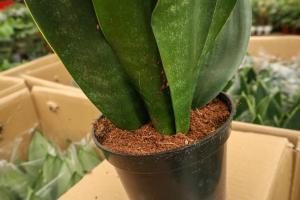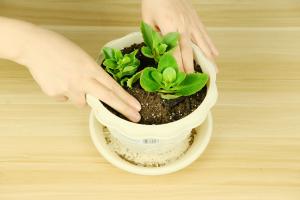Where to Plant Ferns: Tips for Growing Healthy Ferns
Introduction
Ferns are some of the most beautiful and delicate plants in the world. They have been around for millions of years and can be found in almost every corner of the globe. However, growing ferns can be a bit tricky, as they require specific conditions to thrive. One of the most important factors when it comes to growing ferns is selecting the right location for planting. In this article, we will explore the best places to plant ferns and give you tips for growing healthy ferns.
Indoors or Outdoors?
One of the first decisions you need to make when it comes to planting ferns is whether you want to grow them indoors or outdoors. Indoor ferns are popular because they can add a touch of green to any room, and they are relatively low-maintenance. When planting ferns indoors, it is best to select a spot that gets plenty of indirect sunlight. Too much direct sunlight can damage ferns, and too little light can cause them to wilt. You should also make sure the room is well-ventilated, as ferns need plenty of fresh air to thrive.
If you choose to grow ferns outdoors, there are several options for placement. Many ferns do well in shaded areas, where they can receive dappled sunlight. Some ferns can also tolerate full sun, but they will require more water and fertilizer to stay healthy. When planting ferns outdoors, it is important to choose a location that is sheltered from strong winds, as they can damage fern fronds.
Soil Type
Another important factor to consider when planting ferns is soil type. Ferns prefer soil that is rich and well-draining. If the soil is too compacted or contains too much clay, it can make it difficult for the fern's roots to grow. Adding organic matter, such as compost or leaf mold, to the soil can help improve drainage and provide the ferns with the nutrients they need to flourish.
Watering and Fertilizing
Once you have placed your ferns in their new location, it is important to keep them well-watered and fertilized. Ferns need to be watered regularly to keep the soil moist, but not waterlogged. Over-watering can lead to root rot, which can be fatal for ferns. Fertilizing ferns with a balanced fertilizer every four to six weeks can help provide them with the nutrients they need to grow healthy and strong.
Conclusion
Growing ferns can be a rewarding experience, but it does require some patience and attention to detail. When it comes to planting ferns, selecting the right location is crucial to their success. Whether you choose to grow ferns indoors or outdoors, in shaded areas or full sun, make sure they have rich, well-draining soil and keep them well-watered and fertilized. With these tips, you can grow healthy, beautiful ferns that will add a touch of green to any space.

 how many times do yo...
how many times do yo... how many planted tre...
how many planted tre... how many pine trees ...
how many pine trees ... how many pecan trees...
how many pecan trees... how many plants comp...
how many plants comp... how many plants can ...
how many plants can ... how many plants and ...
how many plants and ... how many pepper plan...
how many pepper plan...
































